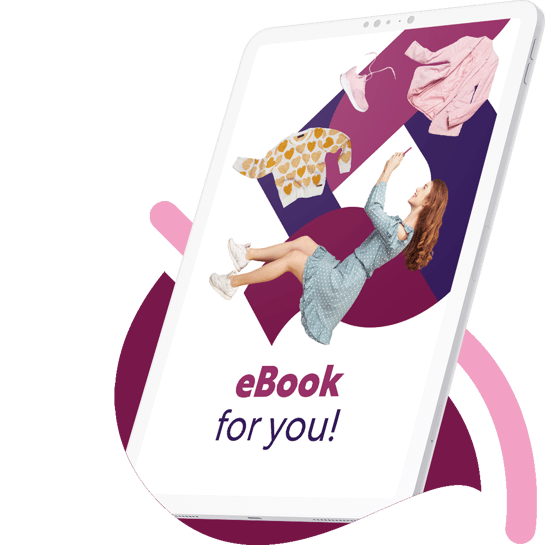Instagram: The home of the modern customer

Although Facebook is still the preferred platform for Millennials, many users are moving towards other platforms, the American Press Institute reports. Retailers who want to keep the communication open with this large generation of spend-happy, highly social, young shoppers must be ready to follow suit, going where the consumers are. In the case of young, modern shoppers, the answer is two platforms you have probably heard about but may not have considered until now: Instagram and Snapchat, a platform we previously inspected.
Instagram: let’s start from the beginning
Instagram is a visual social networking app. The whole point of the platform is visual sharing and communication through easily edited pictures, making it fast and easy for users to obtain information at a glance. Users can communicate through likes, comments, and hashtags, as well as through direct messaging. A recent update on the app has made it possible, in a Snapchat-like move, to share temporary photos and videos with followers.A great opportunity for retailers
With almost 500 million monthly active users as of June 2016, today Instagram is one of the most popular social networks worldwide. Visual content is one of the key pieces in any brand’s marketing strategy - and Instagram is the ideal platform to visually represent your brand’s personality, connect to consumers and stay top of mind. Due to the highly visual focus this app, it is perhaps unsurprising that, as a Forrester study reports, engagement with brands on Instagram is ten times higher than on Facebook. Not only: a staggering 90 percent of Instagram users are younger than 35, making the social platform the perfect place to interact with (and target) young, hip, modern customers. Interested? Here are five simple ways you can use Instagram to interact with consumers and connect with potential ones.1. Make it about the customer
Increase interactions and engagement by encouraging people to contribute ideas on how to personalize, use and re-invent your products. You can do this in different ways: Highlight your customers’ most interesting posts. Share with your followers funny, cute, and original uses of your products. On the one hand, you will underline that you value your customers’ input and personality; on the other hand, you will showcase to other consumers how your products can be used and repurposed. IKEA USA’s Instagram account often shares customers’ innovative ways of composing, personalizing and re-using the items the furniture giants sells and encourages consumers to come up with their own compositions and styles. Crowdsource ideas. When Heineken decided to create a pop-up bar, they asked their followers to describe their ultimate lounging experience. The most interesting and popular ideas were given to a team of professional designers, who brought them to life. By using crowdsourcing you can increase engagement while effectively having your customers create free content for you – talk about a win-win! Award the best. Organize picture contests and giveaways themed on your products to increase engagement. You could for instance award gift cards, a discount or a special treat to the most interesting and fun entries. You might even end up giving free products to somebody who has never tried your brand and making him a customer for life. People love gifts at least as much as they love to express themselves.2. Hashtag it!
Create your own hashtag, use it in your posts and encourage others to use it too. Some ways to promote the use of your hashtag include:- Picture galleries featuring the best snapshots your customers have shared and tagged. Spanish fashion brand Desigual has a whole section of its website called “inspiring people” and dedicated to customers’ snapshot.
- Organize a weekly or monthly prize, and draw one picture that has used your brand hashtag.
- Share (“regram”, as they say in the Instagram lingo) selected tagged pictures with a special comment or mention that makes the user feel special. Ben & Jerry’s does this very well; the mere thought of being showcased on the official feed is enough to send fans snapping their ice cream cones.
3. Get in touch with Instagram stars
People tend to trust individuals more than big institutions. Millennials go one step further: according to a study from marketing firm Collective Bias, nearly a third of young consumers are more likely to purchase a product endorsed by a non-celebrity blogger rather than one endorsed by a celebrity. Non-celebrity endorsements are especially valued when they come from influencers that they consider peers. Now, there is a very large number of these peers-bloggers-influencers on Instagram. Start by investigating the scene, find out the major influencers in your region, and research which of them would be a good fit for your product, based on their personality as well as their crowd of fans. Then contact the influencers, and be original. I know what you are thinking – why not just send a free product and ask this influencer for a mention? That may work, sure - but be aware that many of these well-known bloggers have a trust relationship with their public, and will often give an unbiased, honest reaction to your items. Which means, you may end up with a very public negative review. Rather, discuss with the influencer the best ways to create valuable content together which can fit with your objectives, that is reaching a larger crowd, and the Instagram star’s goals, entertaining their public.4. Think like your consumers
A great way to engage customers is to show that you understand the platform you are using, and are ready to play with it – in other words, that you are not just a brand trying to sell. Staples, the office supply chain store, is great at that. They ask questions to their followers and make it fun for people to reply. For example, they will publish a picture with emojis, small images used to express feelings, and conclude “"That's pretty much our day. How about yours? Tell us in emojis.” This kind of interaction is great to increase engagement, as users are encouraged to do what they love: show how fun and creative they are while talking about themselves.5. Focus on the look
Instagram is about images, but not any picture will do. Always focus on quality, consistency and brand voice. Choose a color scheme, and use it consistently throughout your snaps. The colors should complement your brand personality; for example, zero-calorie drink Zevia uses bold, bright colors and high contrast to showcase the refreshing, fun personality of its brand. In contrast, online clothing retailer Everlane, a brand that focuses on selling high-quality essentials at honest prices, posts pics in a muted earth palette, blacks and whites. Stay true to your brand. Decide what you stand for and how to showcase it in your visual image, and stick to your guns. An example: Shore Projects, a British watch brand whose products draw inspiration from the British seaside. All of the brands’ Instagram photos tie to this inspiration: even when the pictures do not feature UK coasts, they maintain the feel of the British seaside with muted colors, grays and blues. Add captions, and use them to showcase your voice and interact with people. Adding “Our latest weekender bag” next to a snap of one of your products may be descriptive – but is it engaging? What about saying instead: “You can easily fit a jumper, a book, your tablet and a bottle of water in our blue weekender bag. What would you put in it for a last-minute escapade?”. By asking questions you will also increase the chance of starting a conversation with your followers. Your present and future customers are already on Instagram – what are you waiting for?

